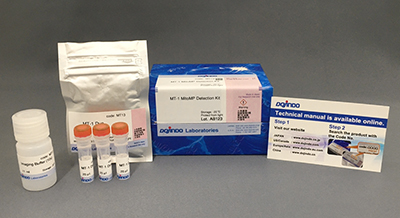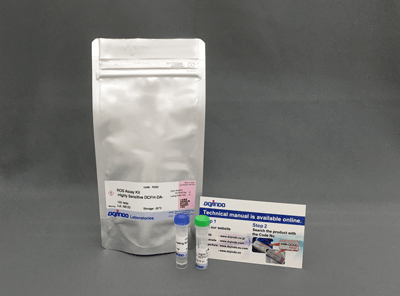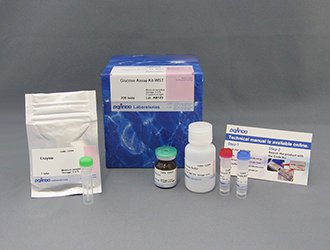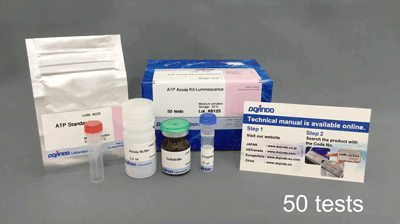ADP/ATP Ratio Assay Kit-Luminescence
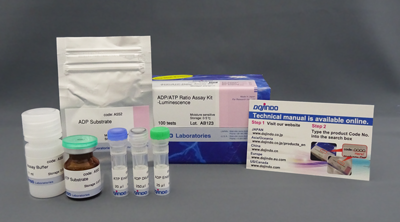
ADP/ATP Ratio Assay
- Stable result of ADP/ATP ratio value
- Reagents can be stored after preparation
- Store at 0-5℃(No freeze-thaw required)
-
Product codeA552 ADP/ATP Ratio Assay Kit-Luminescence
| Unit size | Price | Item Code |
|---|---|---|
| 100 tests | $515.00 | A552-10 |
| 100 tests | ・ATP Enzyme Solution ・ATP Substrate ・Assay Buffer ・ADP Enzyme Solution ・ADP Substrate ・ADP Dilu |
20 µl×1 ×1 11 ml×1 25 µl×1 ×1 250 µl×1 |
|---|
Description
Normally, when the intracellular ATP production decreases, the degradation product ADP will be resynthesized to ATP to maintain the intracellular ATP concentrations. However, when the metabolism of ATP production is disrupted, ATP cannot be resynthesized from ADP, but intracellular ATP is converted to ADP and the ADP/ATP ratio increases. The change in ADP/ATP ratio is not only related to apoptosis and autophagy, but also intracellular energy metabolism, and is used as one of the indicators of metabolic activity.

This kit can measure the ratio of ADP to ATP in cells. First, measure intracellular ATP by the luciferase luminescence method.

After that, use the enzyme to convert all the intracellular ADP to ATP, then use the same luciferase luminescence method to measure the total ATP to calculate the ADP/ATP ratio.
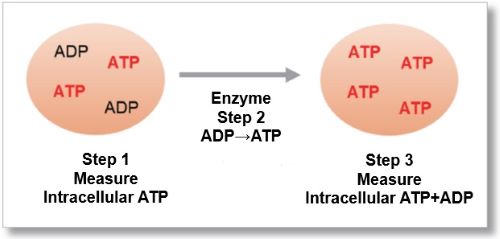
Manual
Technical info
The table below shows a comparison with existing products from other companies.
| Result | Stability (Reagents after preparation) |
Storage | |
| Dojindo | The ratio result is stable | Preservation is possible | 0-5°C No freeze-thaw required |
| Company S | The ratio result is fluctuate | Preservation is not possible | -20°C |
Compared to existing products, Dojindo's kit can stably measure the ratio of ATP and ADP, independent of the total amount of ATP and ADP.
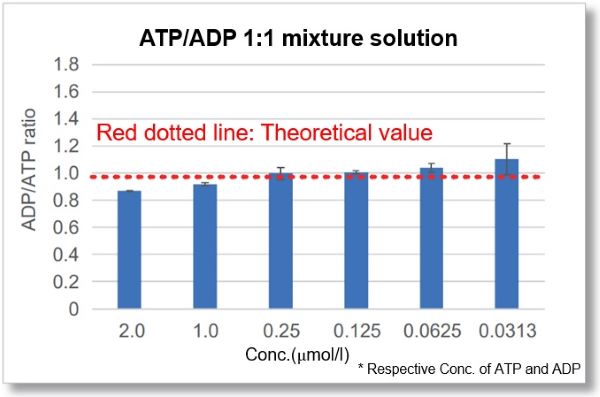
Application Data: Evaluation of ADP/ATP Ratio in Apoptosis-induced cells
The ADP/ATP ratio of staurosporine-treated Jurkat cells was measured in a plate reader using this kit. Apoptosis induced by staurosporine treatment was evaluated by confocal microscopy and flow cytometry using Annexin V-FITC and PI dye.
The results showed that the ADP/ATP ratio increased predominantly in the staurosporine-treated cells and the phosphatidylserine (PS) reversal and cell membrane broken of the same cells were observed, which indicated the ADP/ATP ratio change in apoptosis-induced cells.
<The Result of ADP/ATP Ratio>
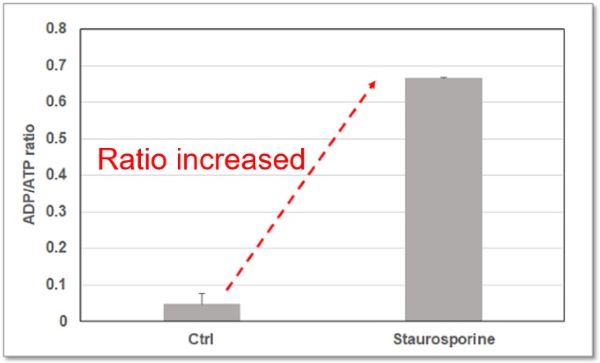
<The Result of Annexin V/PI Staining>
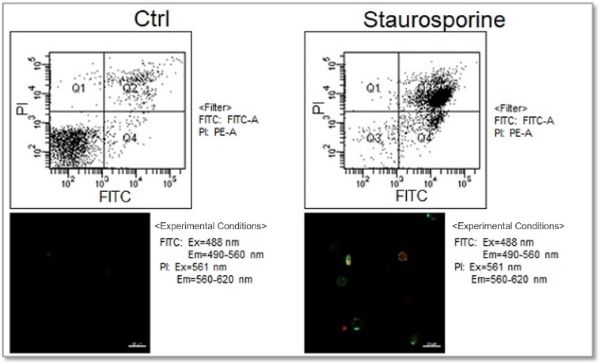
Application Data: ATP/ADP change in senescence-induced cells
We measured the ADP/ATP ratio of A549 cells treated with Doxorubicin (DOX) and untreated A549 cells using this kit.
As a result, it was confirmed that the ADP/ATP ratio of DOX-treated A549 cells increased predominantly, and it was possible to observe the variation of ADP/ATP ratio by senescence induction using this kit.
<ADP/ATP Ratio>
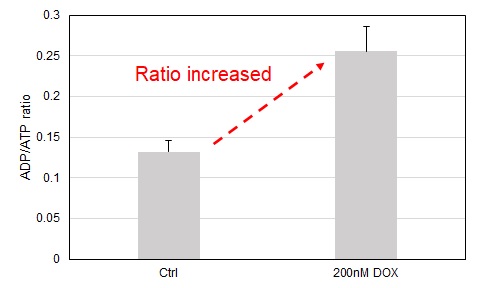
<General Protocol>
1. Seed A549 cells in a 10 cm dish.
2. Change the medium to DMEM medium (containing FBS) with 200 nmol/l DOX, and incubate at 37°C for 2 days.
3. After collecting the cells, seed the collected cells onto 96 well plates and incubate at 37°C overnight.
4. Determine the ADP/ATP ratio according to the protocol of this kit.
Q & A
-
Q
How many samples can be tested for each kit?
-
A
If setting 3 duplicate wells (n=3) for each sample, this kit can test 32 samples. A common 96-well plate layout, please refer to the instruction manual.
-
Q
Can I use any plate other than white plate for testing?
-
A
Using a black or clear plate may decrease the luminescence intensity. Also using a clear plate may increase the background. Therefore, white plates are recommended.
-
Q
Can I store the working solution for a period of time?
-
A
There are four types of working solutions in this kit: ADP working solutions cannot be stored and should be prepared on time. For the other three working solutions, the storage conditions and preservation period are as follows.
Storage condition Period ATP working solution -20℃ 30 days ADP Substrate working solution 0-5℃ 30 days ADP Enzyme working solution 0-5℃ 30 days ADP working solution can't be stored -
-
Q
How can I optimize the proper cell numbers?
-
A
Seed the serially diluted cells onto a plate and culture them under the same conditions as the target experiment. After that, prepare a standard curve ( Fig. 1) using this kit. Choose the cell numbers which are linear range in the standard curve and the ADP/ATP ratio (Fig. 2) is constant. In the example below, the proper cell number range is 2,000 to 4,000 cells.
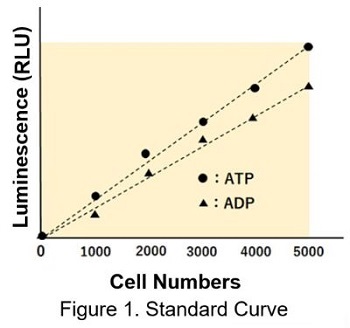
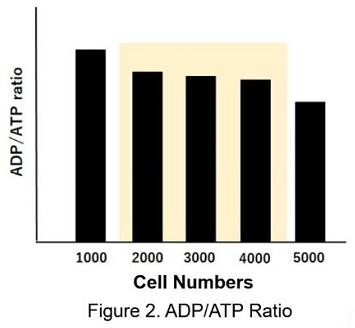
Handling and storage condition
| 1. Storage: 0-5℃; 2. Moisture-proof |







